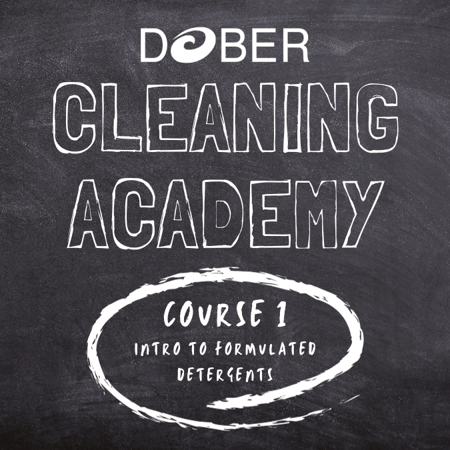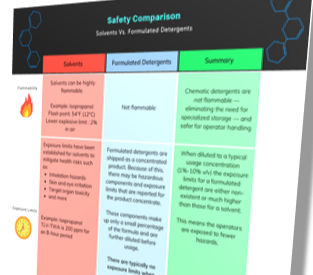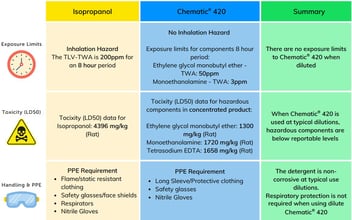Lesson 3: What Makes an Ideal Formulated Detergent?
As we continue our course, "Intro to Formulated Detergents," today we'll review what exactly a formulated detergent is and what makes an ideal formulated detergent.
In case you missed it, you can check out the first two lessons of this course below:
- Lesson 1, in which we talk about why industrial cleaning is critical
- Lesson 2, in we reviewed the benefits of improving your facility's cleaning program
Whether you're looking to improve your facility's cleaning processes, have a pretty good process already but just want to learn more or you need to devote more intentional thinking to cleaning, we hope these reading materials will help you on your way.
Formulated Detergent Definition
The term detergent is used in many different contexts, such as laundry detergent, dishwashing detergent, and household cleaners, to name a few.
Here at Dober, our Chematic division supplies what we refer to as “formulated detergents.”. The term “formulated detergent” refers to a cleaning product consisting of several ingredients, which was systematically developed and tested for removal of specific residues.
While many general purpose cleaners exist, we find that cleaning is most effective when using a detergent that is “targeted” toward the removal of they types of soil and residues you are dealing with at your facility.
Dober has extensive experience with cleaning the types of residues found across various regulated industries such as
- Pharmaceutical
- Biopharma
- Nutraceutical
- Cosmetic/Personal Care
As soils in these industries become more complex, they will require cleaning agents that are specifically formulated to break down and remove these complex residues.
8 Traits of an Ideal Formulated Detergent
Let’s discuss what makes an ideal detergent.
- The detergent must break down the residue into very small particles (or dissolve it) and hold the residue in suspension/solution for as long as possible. This prevents re-depositing along the equipment train. Having a good understanding of the composition and chemistry of the residues helps formulators select raw materials that will perform best in these tasks.
- The detergent formulation including all its components must be non-hazardous and safe for operator handling.
- It should be compatible, non-reactive, and non-corrosive to the material of construction of the equipment.
- Ideally, a pharmaceutical detergent must have no added colorant or odorant, as these components are usually more difficult to remove from the equipment surface.
- Detergent must be aqueous-based and easily water-soluble.
- The components of the detergent should be easily detectable by simple analytical methods, like Total Organic Carbon (TOC) or High-Performance Liquid Chromatography (HPLC).
- The cleaning process with the detergent must be reliable and consistent, using a minimum of cleaning steps.
- Cleaning with the detergent must be efficient and time-saving as compared to the older cleaning process. By decreasing the cleaning time and use of manpower, the detergent must be cost-effective and offer a good return on investment.
Now that we've covered the basic traits of an ideal formulated detergent, next we'll dive deeper into the makeup of these cleaning products. In the next lesson, we will discuss common ingredients found in formulated detergents, as well as their functions in cleaning.
This concludes the the third installment of this course, "Intro to Formulated Detergents." Continue on to Lesson 4 to learn more about common ingredients in formulated detergents and their functions.




